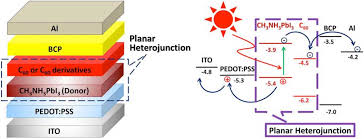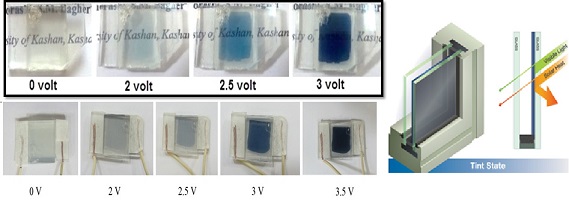| نویسندگان | مدینه نژادزنگنه,سیدمحمدباقر قریشی,محسن قاسمی |
|---|
| نشریه | OPT LASER TECHNOL |
|---|
| شماره صفحات | 1 |
|---|
| شماره مجلد | 143 |
|---|
| ضریب تاثیر (IF) | ثبت نشده |
|---|
| نوع مقاله | Full Paper |
|---|
| تاریخ انتشار | 2021-06-23 |
|---|
| رتبه نشریه | علمی - پژوهشی |
|---|
| نوع نشریه | الکترونیکی |
|---|
| کشور محل چاپ | ایران |
|---|
| نمایه نشریه | JCR |
|---|
چکیده مقاله
In this paper, first, multilayer features of TiO2/Ag/MoO3 (TAM) are investigated as a transparent conductor structure alternative to Indium Tin Oxide (ITO) electrodes. Thickness effects on the electro-optical features are investigated and an optimal structure is designed. A maximum figure of merit (FOM) of 1.2 × 10-2 (Ω-1) was calculated for a asymmetric TiO2(45 nm) /Ag(10 nm) /MoO3(40 nm) multilayer. By considering an Organic Light Emitting Diode (OLED) based on TAM trilayer electrode with TiO2/Ag/MoO3/TPD (N,N′-Bis(3-methylphenyl)-N,N′-diphenylbenzidine)/Alq3 (tris(8-hydroxyquinolinato) aluminum)/Al, the effect of variation in different layers thickness on OLED device are studied. Different output features are investigated using thin-film optics and OLEDs optical models based on microcavity and interference effects. The results showed that it is possible to tune output light, intensity, spectrum width, and the wavelength for intensity peak with respect to each of the layers thickness. Finally, the ultimate structure of such device based on TAM is suggested to be TiO2(45 nm)/Ag(10 nm)/MoO3(10 nm)/TPD(40 nm)/Alq3(50 nm)/Al, in which the optimal emission zone is located at the interface between the emitting and hole-transporting layers. Finally, the TAM-based OLED with optimized structure and OLED with ITO electrode were fabricated to compare and evaluate the results obtained from the simulation. The results show that OLED prepared on TAM anode has lower turn-on voltage, higher luminance intensity, higher current efficiency and higher power efficiency compared to the ITO-based device.




